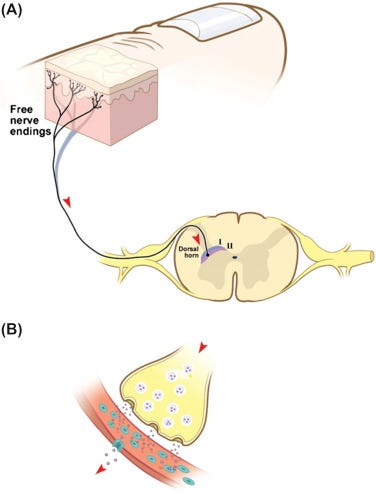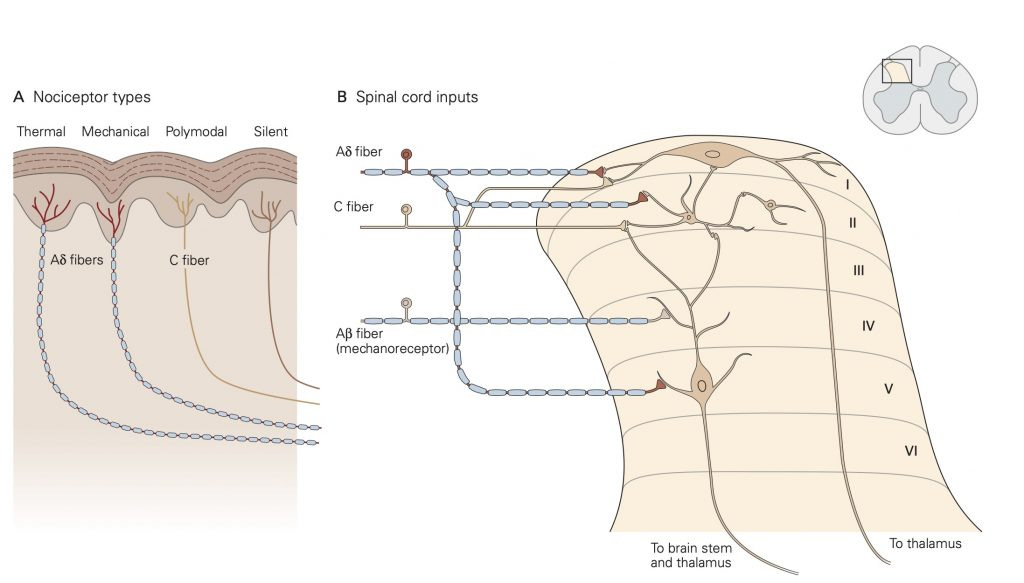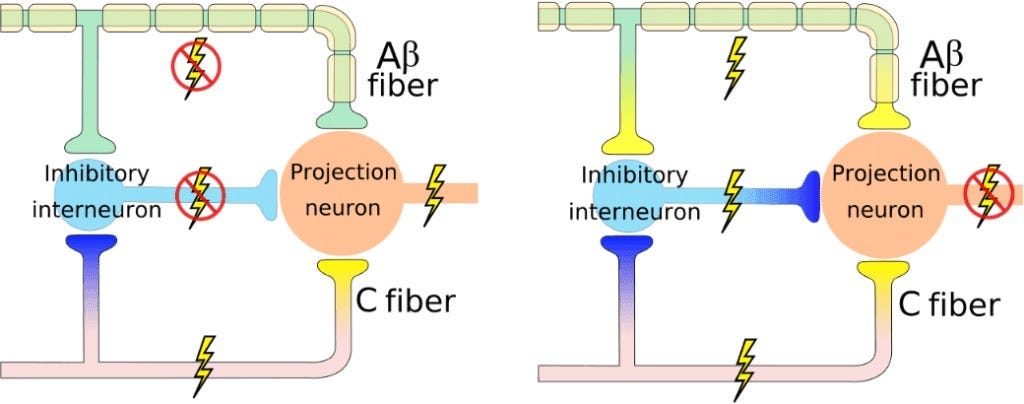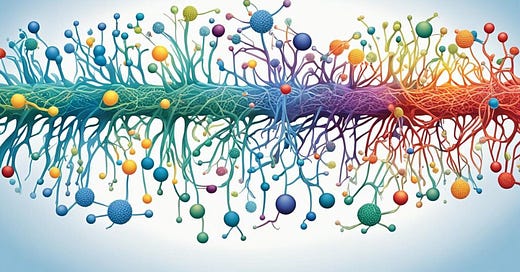What Are Nociceptors?
Discover the sensory pain receptors behind the body's first line of defense against harmful stimuli
While unpleasant, pain plays a crucial role in our survival. Evolutionarily, it has been developed as a way to alert us of something wrong somewhere in the body—typically damage to tissue—and its discomforting feeling urges us to take action. The sensation of pain is governed by a set of pain receptors, also known as nociceptors, that come in different types and are all responsible for conveying critical information on tissue damage via nerves to the brain.
Nociceptors: Structure and Physiology
Nociceptors are specialized sensory neurons that sense potentially harmful stimuli, such as extreme temperatures and exogenous chemical irritants, that come into contact with tissue. They are the body's functional pain receptors that constantly inform the brain of tissue damage that is likely to occur, which causes the body to take protective measures to prevent further harm to tissue.
Their unique structure:
Nociceptors have raw nerve endings (exposed nerve fibers) that makes them particularly sensitive to changes in pressure and temperature, and also exposes them to potentially dangerous chemicals.

Their structure is also non-specific and multi-modal, meaning that a single nociceptor can detect multiple types of stimuli through receptors such as physical pressure/distortion through mechanoreceptors, chemical signals from inflamed tissue through chemoreceptors, and heat through temperature-sensitive ion channels in thermoreceptors.
The benefit of this is that the body is able to perceive pain through multiple types of tissue damage by a single receptor pathway that passes through the dorsal horn and spinothalamic tracts of the spinal cord.
Types of Nociceptors Summarized
Nociceptors come in two main types: A-delta fibers and C fibers

A-delta fibers
Lightly myelinated and thicker
Respond big and fast! (5-30 m/s)
Polymodal (mechanical, thermal, and chemical signals)
Some A-delta fibers have higher firing thresholds
C fibers
Not myelinated and thinner
Slower response (about 1 m/s)
Polymodal (mechanical, thermal, and chemical signals, plus “wider range signals”)
Pain-Processing in The Brain
A-delta fibers and C fibers synapse onto the spinal cord where the anterolateral, or spinothalamic, system transmits pain and temperature sensations to the brain. These spinal neurons, which project across the midline of the body before ascending to the thalamus, relay the pain signals to the pain-processing centers of the brain. These processing centers and their functions are summarized below:
Prefrontal cortex: directs attention toward/away from painful stimulus
Insula: processes the degree of pain
Amygdala: can alter the degree of pain through an emotional response
Somatosensory cortex: localizes pain and allows us to determine the origin of the painful stimulus/tissue damage

Figure 3. The afferent A-delta fibers and C fibers of nociceptors synapse onto the projection neurons within the dorsal horn of the spinal cord, which transmits the neural inputs it receives to the brain’s pain-processing centers via the thalamus. (Kandel and Schwartz, Principles of Neural Science, 1991)
Gate Control Theory
According to the Gate Control Theory, pain results from a balance of activity in both nociceptive and non-nociceptive pathways. These pain signals from both pathways converge in the spinal cord, which has a limited capacity to receive incoming signals; non-painful sensory info can reduce pain perception by closing the nervous “gates” through which nociceptive input enters the spinal cord and travels to the brain. This theory essentially describes how non-painful sensations are able to reduce pain perception, explaining how something like a massage (a non-painful stimulus) can offer some pain relief.

Nociceptors, while they may have a cute name, play an understated vital role in protecting us from serious tissue damage. And while their function is evolutionarily ancient from a neurofunctional perspective, it is still just as crucial for our survival as the more advanced pain-processing centers in the cortical areas of the brain.




